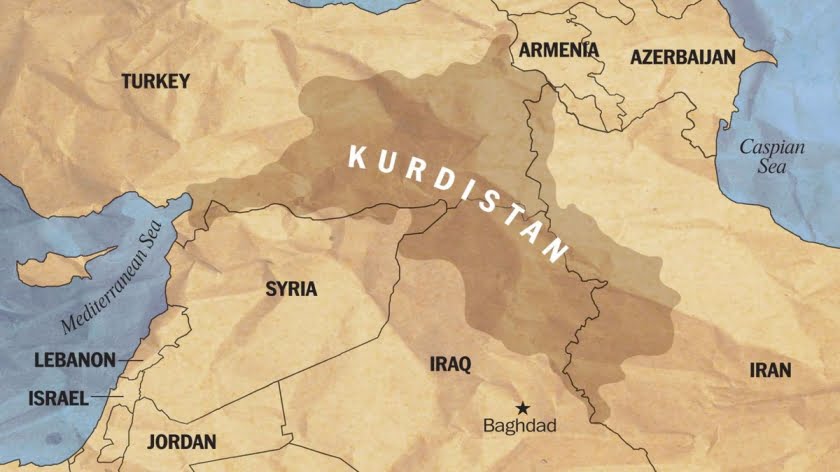Big War in the Arctic: How Could It Happen?
The Arctic’s ice cover is melting, which presents new economic opportunities for the Arctic states, while also making the competition between them stiffer. Can these opposing interests lead to a large-scale war in the region?
The fight for the resource-rich region now involves not just the Arctic Ocean countries –the US, Russia, Canada, Norway, and Denmark– but powers from other regions as well, such as, for instance, China. Polar research is no longer a purely scientific endeavor, the focus has now shifted towards economic aspects, which in turn has led to a serious political debate between the Arctic states.
Russia’s comeback in the Arctic
In the “wild 1990s”, almost all Russian military units stationed in the Arctic were downsized. There was basically no army presence all along the coastline, from Murmansk to Chukotka. Russia lost control over the vast region.
Now Russia is returning to the Arctic and is using new technological solutions to stake its claim. The Russian Armed Forces are rapidly increasing their military potential and presence in the region. Moscow has the largest ice-breaker fleet in the world. It is building military and navy bases as well as airfields in the region. It is also improving its air support systems and anti-aircraft protection, and is upgrading its radars.
But other Arctic states are doing the same. This begs the question whether conflicting interests in the region could lead to a full-scale war.
Indeed, there are all kinds of disagreements and discord between the Arctic states at this point. And some of them are potentially dangerous.
First, borders between exclusive economic zones in the Arctic Ocean are not defined because of a certain ambiguity in international law, which leads to different interpretations and disagreements.
For example, an exclusive economic zone’s width is not supposed to be over 200 nautical miles (370.4 km) from the so-called baseline. But if a country can prove that some section of the ocean floor is part of its continental shelf, then this country’s exclusive economic zone could be expanded.
This has important practical implications, because the country would then get the right to explore the ocean floor and develop its natural resources, create and use man-made islands, and build different facilities. This could turn into a very lucrative endeavor, since the Arctic region could potentially hold up to a quarter of global oil and gas reserves.
Northeast Passage dispute
The second important problem in the Arctic is the debate about states’ authorities over the Northeast Passage (NEP). The shipping route is becoming increasingly accessible to commercial vessels because of melting ice.
Lately, the US has been getting more vocal about restricting Russia’s presence and promoting the idea of turning the NEP (called the Northern Sea Route in Russia), into an international route, as opposed to part of the Russian national transport infrastructure.
The US also seeks to increase its activity in the Arctic. One of the strategies used by the Americans is deploying a significant number of US Coast Guard units in the region.
Western experts claim that Russia’s position on the NEP/Northern Sea Route is not always convincing, as allegedly it violates international maritime law to some degree and goes against the principle of the peaceful use of the seas and oceans. Moscow argues that Russia has authority over the NEP which passes through its exclusive economic zone and any vessels willing to use this route have to ask for its permission.
This difference could potentially cause serious incidents. Let’s imagine a scenario where, for example, US Navy vessels are going through the NEP claiming that they are using the route based on the freedom of the seas principle. This doctrine allows for free passage through territorial waters if this section is part of an international maritime trade route. But in reality this often causes all kinds of incidents – clashes, attempts to force vessels out, etc.
Military issues
There are also military issues in the Arctic. In the mid-1990s, Russia developed the Northern Strategic Bastion concept, which defined special measures for maintaining combat survivability of strategic missile submarines.
The idea was to create secure zones around ballistic missile-armed submarines, with air and sea support, as well as stationary underwater illumination systems.
If that doctrine had been implemented, it would’ve been challenged by the US and serious pressure from them would have been expected. By the way, nuclear ballistic missile-carrying submarines are usually deployed in neutral waters. This would’ve been a cause for great concern in the US.
But this factor is not as significant as the previous two. These problems have always existed, in the Arctic and everywhere else. Americans are in a similar situation. They have relatively small zones where nuclear ballistic missile submarines are deployed and they guard these areas using all available means and resources. But this is an ongoing thing.
To analyze a potential large-scale war in the Arctic, we have to bear in mind one important factor – any conflict between the existing players in the region poses a risk of turning into a nuclear war.
NATO is clearly interested in the Arctic – in the broadest sense. So, on the one side of the scale we have the US, Norway, Canada, Greenland, and Denmark. On the other side, there is Russia. China now also joins the club, since it has been actively making its way into the Arctic region recently. China is seeking to get a foothold in the Arctic, so that it can one day use the northern routes for commercial shipping – if the climate allows.
Basically, every developed country has its interests in the Arctic – it’s just that not everyone openly admits that. As soon as the Arctic pie is on the table, every one of them will claim their piece.
At this point, commercial shipping in the Arctic Ocean is, for the most part, not economically expedient. Unfortunately, target indicators for goods to be shipped from Russia via the Northern Sea Route have not been met so far. Today, this route is still too risky, and these risks outweigh the advantages of using the Northern Sea Route/NEP and saving time.
Maritime container shipping between China, South-East Asia and Europe that goes through the Suez Canal around Africa has long been established – and perfected. These routes see ships of incredible sizes, and the number of containers shipped is jaw-dropping, too, while the price of shipment is relatively low. The whole thing runs like clockwork. Figuratively speaking, you can buy a ticket, board your ship, and know that you will arrive at your destination on time.
With the NEP, you can buy a ticket, but before you set sail, you might get a message, “Sorry, in the Vilkitsky Strait, a windstorm has driven the pack ice 4 meters thick too close to the shore.”
Everyone wants to make sure that their trip goes as scheduled, and this schedule should be set for years to come.
Arctic Ocean conflict wouldn’t differ from South China Sea or Persian Gulf
However, the situation in the Arctic Ocean may change dramatically, if the ice continues to melt at current rates. The Northwest Passage may become completely free of ice in the next 40-50 years. This route goes across the Arctic Ocean along the Northern shores of North America and the Canadian Arctic Archipelago. It will be the shortest way from Shanghai to New York. If that happens, it will give rise to the same kind of problems that exist today around the NEP. The US is most likely to claim authority over the route, while China is sure to say that such claims violate maritime law and go against the freedom of navigation principle.
In the geopolitical sense, any kind of situation that may unfold in the Arctic Ocean will in general be similar to what we see today in the Persian Gulf or around the [disputed] Spratly Islands in the South China Sea.
However, it should be noted that all Arctic region players are nuclear powers with major military capabilities or are members of military alliances – it means that the whole range of deterrence mechanisms would come into play, should anything happen.
It is very unlikely that nuclear powers would resort to nuclear strikes; they would probably use some other mechanism to settle the issue. And such mechanisms would keep the situation from spiraling to a full-scale war, since this kind of conflict can turn into a nuclear one already at phase two.
Russia, for one, would have only two options if a serious incident happened. Moscow could either hang out the white flag or use nuclear weapons. The fact that the size of the Russian Fleet is nowhere near that of the US Navy will largely define the decision-making process. There is no doubt that Washington understands it very well. In other words, who would risk becoming a target of a nuclear strike, with just some cod and oil at stake?
So there is not going to be a large-scale war. There is definitely not going to be a ‘traditional’ war with an official declaration, introduction of martial law, etc. Wars are a territorial thing, limited by national borders. If a war erupts in the Arctic, it will inevitably spread to the Arctic states’ territories. In other words, any war involving Russia will spill beyond the Arctic.
This will be the logic behind the countries’ actions in the Arctic. However, the number of disputes is sure to grow, but there is no reason to believe that the situation in general will be any different from the disputes in the South China Sea, the Persian Gulf, or from the disagreements over oil and gas in the Eastern Mediterranean, where tensions tend to escalate all the time.
All in all, there is indeed no major difference between the Arctic and other tense regions. Of course, there are all kinds of horrifying scenarios of things going wrong in the Arctic. We can’t completely rule out the nuclear apocalypse option, but it’s nothing new – we’ve been living in this situation for quite some time.
By Mikhail Khodarenok
Source: RT







